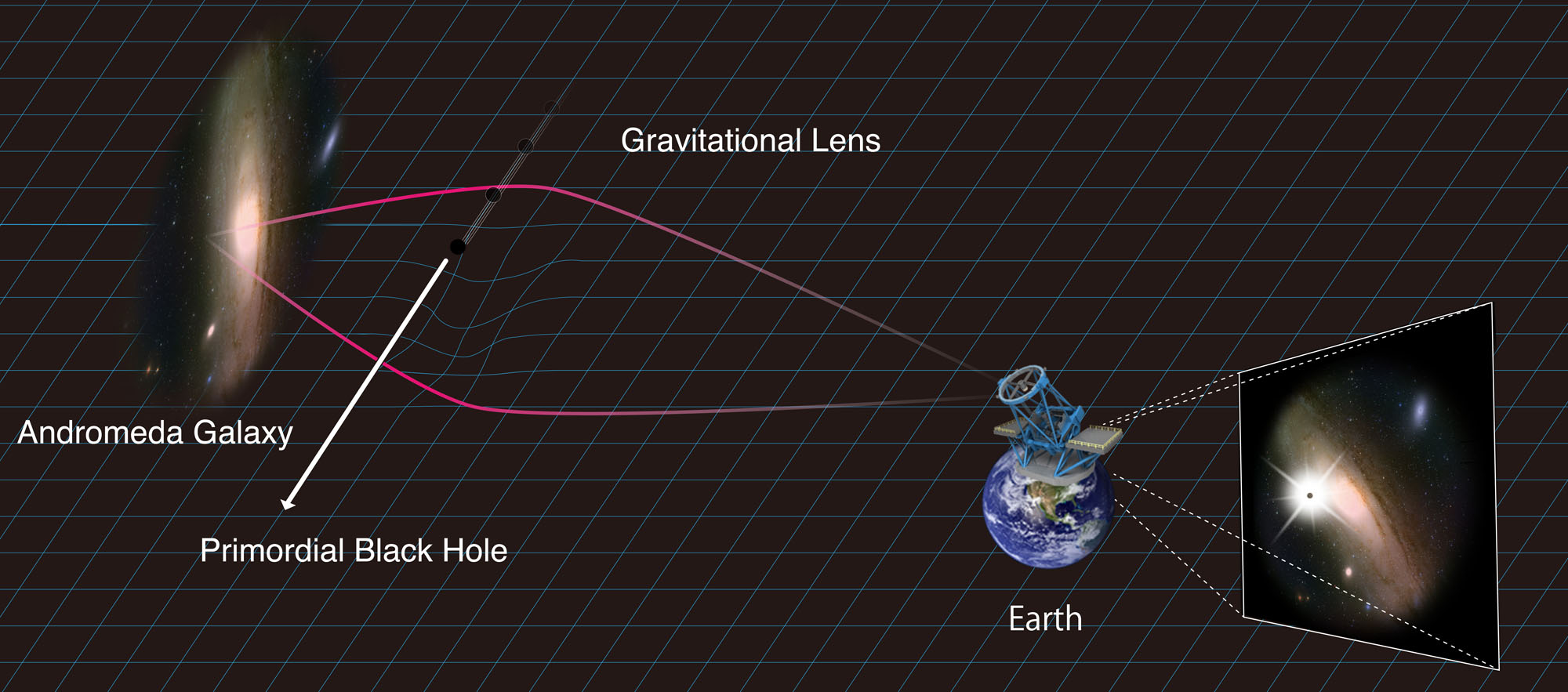What dark matter is (not) made of
“When you have eliminated the impossible, whatever remains, however improbable, must be the truth,” the detective, Sherlock Holmes, says to Dr. Watson in “The Sign of the Four.” Cosmologists searching for dark matter, which should make up 85 percent of the universe’s mass, seem to be following a similar process right now. They are eliminating one component after another. Recently, they succeeded in eliminating two more possibilities.
Dark matter is not made up of tiny black holes. This result was shown by astronomers with the help of the Japanese Subaru telescope. Their strategy was very interesting. According to theories developed by, among others, Stephen Hawking, the universe might be full of tiny, micrometer-sized black holes created in the big bang. These primordial black holes are, of course, invisible. But their interactions can be detected due to their gravitation. If there were a large number of them between the Earth and the Andromeda Galaxy, they would have to continuously bend the light from stars in the distant galaxy. The astronomers looked for such bending – and they didn’t find it in an adequate amount, so these primordial black holes are no longer considered candidates for the missing dark matter.
Dark matter is – probably – not made up of axions. This result is from measurements from the Abracadabra Detector in the USA. The abbreviation stands for “A Broadband/Resonant Approach to Cosmic Axion Detection with an Amplifying B-field Ring Apparatus,” and as its name suggests, the instrument is supposed to detect axions from cosmic radiation due to their conversion into photons. Axions are hypothetical particles, much lighter than all other particles that have already been discovered. If they exist, axions would be ten billion times lighter than an electron. However, they could be whizzing around space in very high numbers. They would interact, like dark matter, through gravity, but also through the weak interaction, which would simplify their detection, if they exist. Abracadabra will continue its search; currently, only axions from 0.31 to 8.3 nano-electron volts have been ruled out.
What is dark matter made of? We will surely be working on this question for a long time, because the candidates, from neutrinos and MACHOs (Massive Astrophysical Compact Halo Objects) all the way to WIMPs (Weakly Interacting Massive Particles), are in the range from 10-26 to 1014 electron masses and more.


One Pingback
Hubble detects small clumps of dark matter | Hard Science Fiction